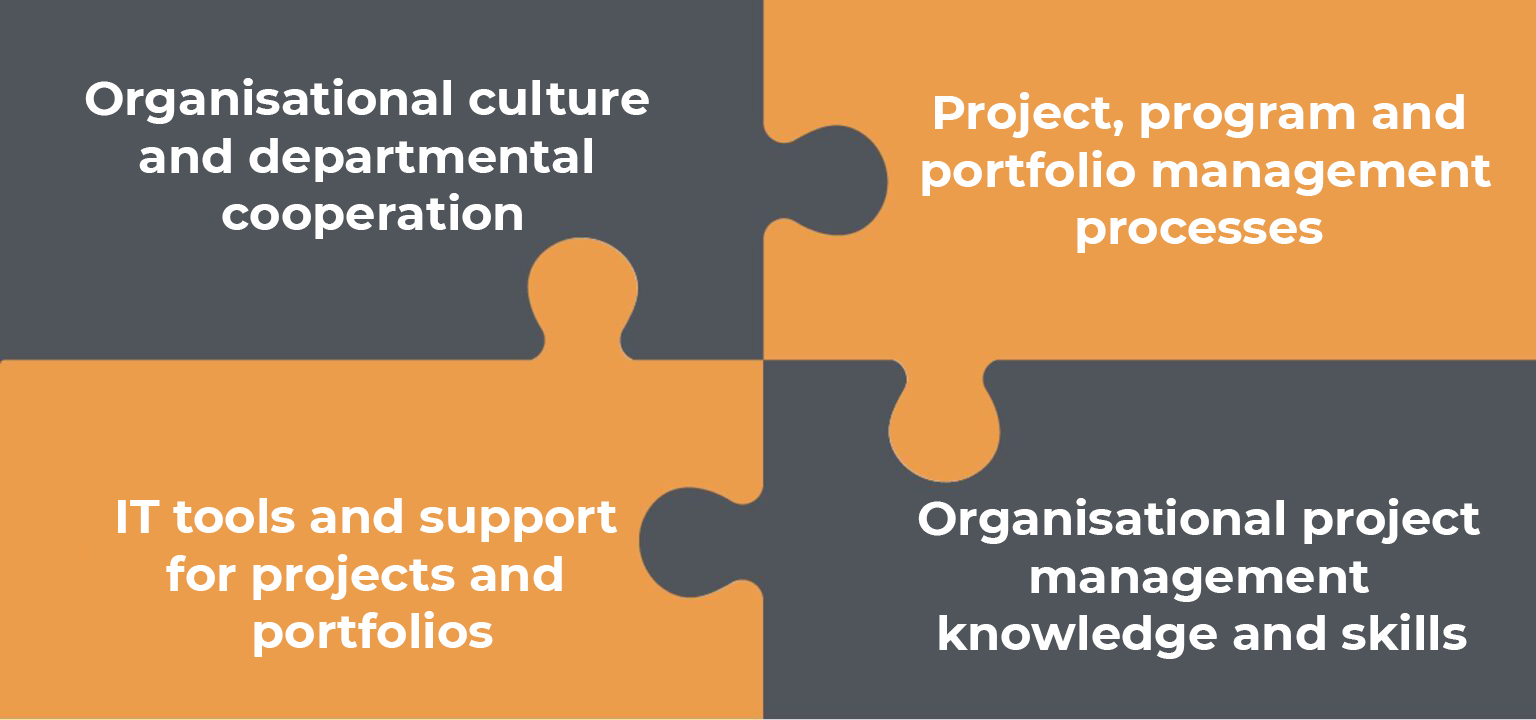When might it be necessary to develop organisational project management maturity?
Many companies face the problem that projects in certain lifecycles of the organisation do not deliver the right results. The bad news is that there is no clear, one-size-fits-all solution. As always, it is critical to find and understand the root cause of the problem. Most often, however, the causes form a complex web of complexity, where it is not enough to improve one element of the puzzle, but rather to address them at a systemic level. An important question is: do the problems occur in a specific project or in a general, recurring way?

If there is a problem with a project, it is likely that it is not the organisation's operations or culture that needs to be supported, but the people involved in the project, depending on whether it is the objectives, deadlines, costs, ongoing changes, risks, product quality, lack of resources, commitment or communication that is causing the difficulties.
If the problem is a recurring issue across multiple projects, the possibility of developing organisational project management maturity may arise. There are several models for assessing and developing organisational project management capability, but whichever model is chosen, the aim is to improve business effectiveness and efficiency.
A POSSIBLE APPROACH TO IDENTIFY THE SITUATION
The levels we use most often have the following characteristics:
Level 1
Different processes, terms and documents characterise projects, which are not uniform in their definition, implementation and monitoring. The objective is still clearly to make projects individually successful, with no central allocation of resources and no effective, unified IT support. It is most common in the early life cycle of organisations and in operations where projects do not play an important role in the life of the organisation.
Level 2
The design and implementation of projects is consistent, but the focus remains on achieving project objectives. At this point, unified supporting IT solutions may emerge, but the needs and business requirements are not uniformly expressed. This often makes pre-project calculations (feasibility, business plan, etc.) not comparable. Projects are driven by individual "champions", but such actors are often few and very overworked. This level is usually typical of organisations in growth, where project management is now a separate 'profession' or task.
Level 3
Projects are launched to achieve strategic objectives, with the aim of optimising organisational results rather than individual success. This is where the organisational Project Management Office (PMO) or project portfolio management comes in, which also consolidates the preparation, categorisation, prioritisation and central monitoring of projects, taking into account organisational resource capacities. Depending on the number and complexity of the projects, it may also be necessary to use an effective project and project portfolio management IT tool. In this case, we can clearly speak of a "project-driven" organisation, operating on a project basis, possibly in a project-oriented way.
Level 4
The goal is continuous development and improvement. Knowledge management and experience sharing are given priority, and professional "black belt" project managers carry out project management tasks. It is common to have an organisational project management quality assurance system, process operation, mentoring system and project governance maintenance and development. In this case, truly effective organisations from a project management point of view are able to improve their business results and efficiency by developing their processes and colleagues independently.
When defining the level of an organisation, it should be noted that the situation is not clearly black and white. Organisations are often situated between 2 levels, straddling the boundaries, so these are more a guide.
WHERE ARE WE, WHAT TO DEVELOP?
The most important question is, after mapping the current situation, in which direction should the organisation start, what improvements should be made to increase the organisational project management capability? In response to this question, we always recommend that the organisation should develop a programme to improve project management capability, with clear milestones and targets. Such a programme often takes years and requires ongoing management, but with the right commitment it can deliver extraordinary results for the organisation.
If you would like to identify the current situation and areas for potential improvement, you can do so by rating the statements below on a scale of 0 to 2 (0-not at all true; 1-sometimes true; 2-totally true):
- It is clear to all stakeholders what we call a project.
- Projects follow a consistent process.
- Project documentation follows standard templates.
- We make some kind of distinction between projects (either on the basis of size or on a technical basis).
- The colleagues involved know clearly what the current performance of projects is.
- We dare to terminate projects and make changes to achieve organisational goals.
- We take organisational resource capacities into account when launching projects.
- The organisation shares lessons learned from projects.
- We strive to continuously develop the project management knowledge and skills of stakeholders.
- We know and see the interdependencies and interrelationships between projects.
- Administration is not perceived by stakeholders as a "necessary evil".
- Supporting areas (HR, legal, IT, etc.) actually help the project manager and the projects.
As a guideline, the values could be the following:
0-6 points – Level 1.
7-13 points – Level 2.
14-22 points –Level 3.
23-24 points – Level 4.
Of course, the above can help you get started, but don't forget about less visible barriers for internal actors such as organisational culture, commitment or individual interests. If you feel the need, contact us for a no-cost consultation.

 Designabc
Designabc